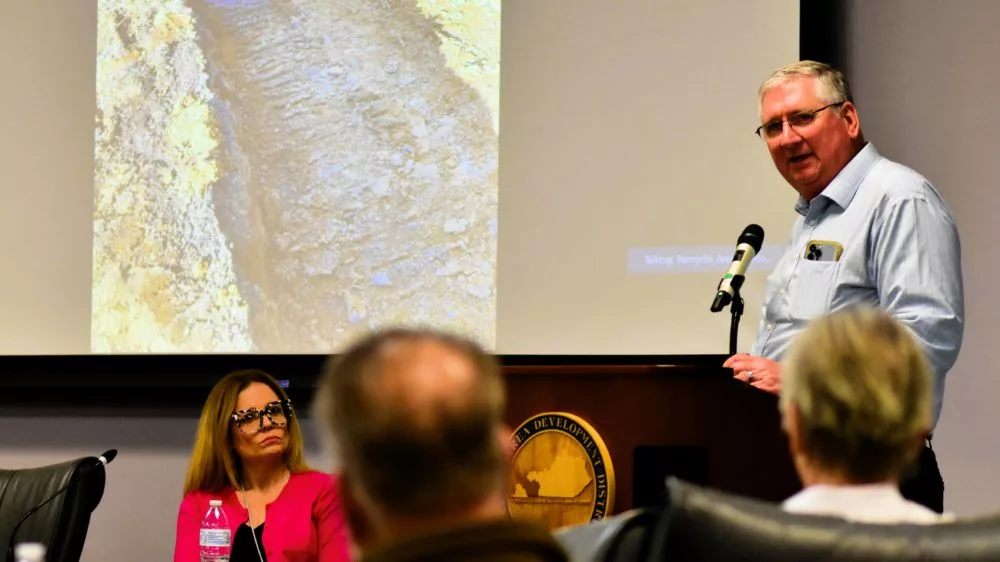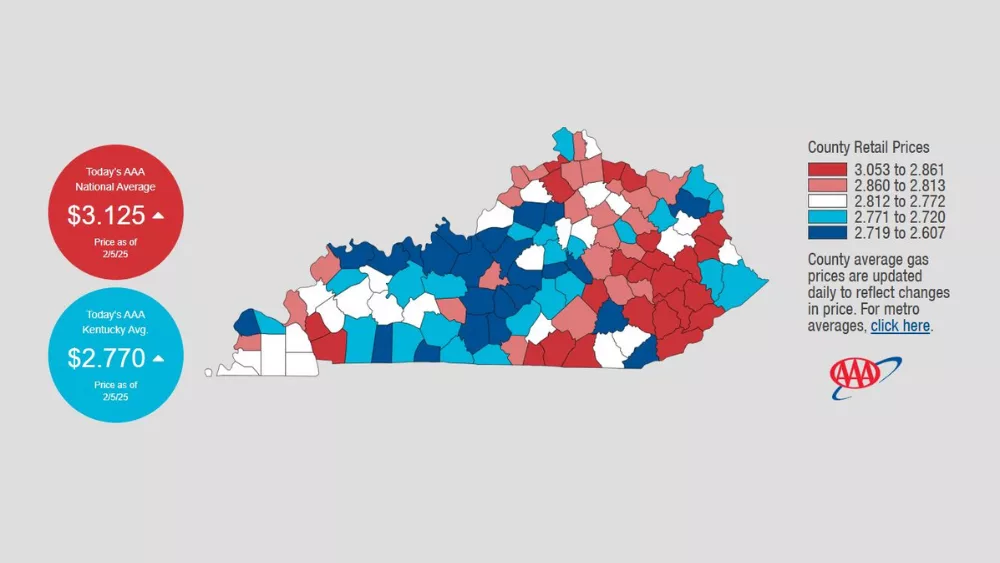
Nearly two years have passed since officials opted to cut the levee on the upper end of Marion’s major raw water source, Lake George, in order to take pressure off of its deteriorating, crumbling dam.
Considerable measures at the local, state and federal level have mitigated some issues, but long-term problems still remain.
In an update with the Pennyrile Area Development District earlier this week, Crittenden County Judge-Executive Perry Newcom noted work is well underway to make repairs on the earthen dam through the creation of a cofferdam — which will surround the breach, the ensuing sinkhole and damaged areas, and allow for a rebuild to begin.
The creation of this cofferdam, however, brought about a unique difficulty. Newcom pointed to photos of ruined county roads, and the consistent sinking and settling of rock back into the lake bed.
Improvements have come to the dam’s facing, but Newcom and Marion City Administrator Diane Ford-Benningfield both confirmed that more needed to happen for its completion, and a new load of important geo-technical materials was set to arrive Thursday.
Furthermore, Ford-Benningfield described engineers having to widen the area where the dam was sinking, in order to pull out all wet, unsafe materials.
In all of this catastrophe, Newcom said one thing has come to light: the Crittenden/Livingston Water District supplies water to a “great deal” of municipalities in the Pennyrile, including commercial and residential outfits. And this demand only keeps increasing.
This includes the City of Marion, whose long-term plan involves becoming a wholesale customer of this Crittenden/Livingston line.
Newcom warned that the current repairs and efforts for Marion will only hold up about four years, and that an expansion to the Crittenden/Livingston Water District is at least 5-to-7 years out — even if recent overtures in Frankfort do lead to successful budget and grant appropriations for the doubling of infrastructure.
This, he said, leaves a dire gap in water security.
Had Webster County not been pushing water into the system, Newcom affirmed Marion would have had more difficulties in the last 18 months. He and Ford-Benningfield also noted that Marion hasn’t had to draw from Crittenden/Livingston since October 2023, but that its treatment facility still has to operate nearly 24 hours a day — an unsustainable rate.
As officials work to replenish and rebuild Lake George, rainfall totals are key. In 2022, Crittenden County’s Mesonet site received nearly 49 inches of precipitation — including about 24 inches after the levee’s demolition. In 2023, the site received only 42 inches of precipitation.
On average, and according to the National Weather Service, Crittenden County should receive between 51-and-55 inches of precipitation, and between 12-to-15 inches every May-July.






